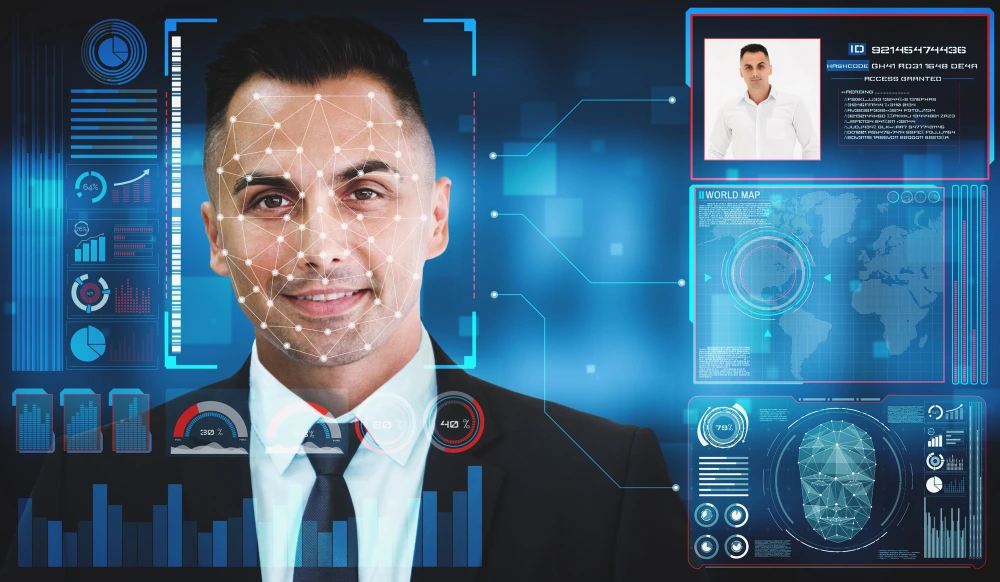Staying ahead of the curve requires a skilled and adaptable workforce in today’s rapidly evolving business landscape. Organizations increasingly recognize the importance of upskilling employees, equipping them with the knowledge and expertise needed to thrive in a dynamic environment. But simply throwing training programs at employees isn’t enough. To ensure long-term success, upskilling initiatives must strategically align with overall business goals.
This article will guide you through creating a successful upskilling program that fosters employee growth while driving tangible results for your company. Here, we’ll explore how to identify skill gaps, develop targeted training programs, and measure the impact of your efforts.
What is Upskilling and Why is it Important?
Upskilling refers to providing employees with the necessary training and development opportunities to acquire new skills or enhance existing ones. This can involve learning new technologies, developing new business acumen, or improving soft skills like communication or leadership.
Upskilling refers to providing employees with the necessary training and development opportunities to acquire new skills or enhance existing ones.
There are several compelling reasons to prioritize upskilling your talent:
- Increased Productivity: Upskilled employees possess the tools and knowledge to work more efficiently and effectively. This leads to reduced errors, faster completion times, and increased productivity.
- Enhanced Innovation: A well-rounded workforce with diverse skill sets is better equipped to tackle complex problems, generate creative solutions, and drive innovation within the organization.
- Improved Employee Engagement: Investing in employee development demonstrates a commitment to their growth. This fosters a sense of value and belonging, boosting employee engagement and satisfaction.
- Reduced Talent Turnover: Upskilling employees equips them with in-demand skills, making them more valuable assets to the company. This helps minimize talent turnover and the associated costs of recruitment and onboarding.
- Future-Proofing the Workforce: As industries and technologies evolve, upskilling ensures your workforce possesses the skillsets necessary to remain competitive in the long run.
Aligning Upskilling Initiatives with Business Goals
Understanding the Business Landscape
Before embarking on any upskilling initiative, it’s crucial to have a deep understanding of the current and future business landscape. This involves:
- Industry Analysis: Staying abreast of industry trends, emerging technologies, and competitive dynamics.
- Customer Insights: Understanding evolving customer needs, preferences, and behaviors.
- Market Analysis: Identifying new market opportunities and potential challenges.
By comprehensively understanding these factors, organizations can accurately anticipate the skills and competencies required to drive future growth.
Translating Business Goals into Skill Requirements
Once the business landscape is clear, the next step is translating overarching business goals into specific skill requirements. This involves:
- Goal Decentralization: Breaking down broad business objectives into smaller, actionable goals.
- Skill Gap Identification: Pinpointing the skills necessary to achieve each goal.
- Prioritization: Determining which skills are critical for immediate success and which are essential for long-term growth.
This process ensures that upskilling efforts are directly linked to business outcomes and deliver maximum value.
Developing a Comprehensive Upskilling Strategy
A well-defined upskilling strategy is essential for achieving desired results. Key components of an effective strategy include:
- Learning and Development Framework: Establishing a structured approach to identify, develop, and deliver training programs.
- Performance Management Integration: Aligning performance management processes with upskilling goals to foster a culture of continuous improvement.
- Career Path Development: Creating clear career paths that outline the necessary skills and experiences for advancement.
- Mentorship and Coaching: Providing opportunities for employees to learn from experienced colleagues and develop leadership skills.
- Measurement and Evaluation: Implementing a robust system to track the impact of upskilling initiatives on individual and organizational performance.
By combining these elements, organizations can create a comprehensive framework for developing a highly skilled and engaged workforce.
Building a Culture of Continuous Learning
A successful upskilling program requires a supportive organizational culture that encourages lifelong learning. Key strategies include:
- Leadership Buy-In: Gaining support from senior management for the importance of upskilling.
- Employee Empowerment: Providing employees with autonomy and resources to take ownership of their development.
- Learning Opportunities: Offering a variety of learning formats, including online courses, workshops, and job rotations.
- Recognition and Rewards: Acknowledging and rewarding employee achievements in learning and development.
By fostering a culture of continuous learning, organizations can create a dynamic and adaptable workforce capable of thriving in an ever-changing business environment.
Leveraging Spire.AI to Maximize Upskilling Impact
Upskilling a large workforce can take time and effort. Thankfully, domain-intelligent AI-powered solutions like Spire.AI can significantly streamline the process.
By harnessing the power of domain-intelligent and LGM-powered AI, Spire.AI transforms the way organizations approach upskilling employees. Its comprehensive platform offers a holistic solution for identifying skill gaps, personalizing development paths, and optimizing talent allocation.
Here’s how Spire.AI assists organizations in effectively upskilling employees:
Automatic AI-generated Employee Skill Profiles: Spire.AI leverages AI to analyze data from various sources, automatically generating comprehensive skill profiles for approximately 83% of your workforce. This eliminates manual data entry, saving valuable time and resources.
Spire.AI leverages AI to analyze data from various sources, automatically generating comprehensive skill profiles for approximately 83% of your workforce.
Career Path Simulation and Reskilling Recommendations: Spire.AI empowers employees to take ownership of their career development. The platform provides personalized reskilling and upskilling recommendations based on individual aspirations and available opportunities. This allows employees to identify pathways for growth, either vertically within their current role or laterally towards new opportunities. Organizations can also leverage Spire.AI to define future skill requirements for growth-based roles, enabling them to prepare their workforce for upcoming transformation strategies.
Spire.AI provides personalized reskilling and upskilling recommendations based on individual aspirations and available opportunities.
Talent Marketplace: This AI-powered platform facilitates internal mobility by connecting employees with relevant opportunities within the organization.
Spire.AI’s Talent Marketplace is a game-changer in fostering internal mobility. By creating a transparent and accessible platform for employees to explore opportunities, organizations can unlock hidden potential and increase employee engagement. The data-driven approach ensures that opportunities are matched with employee skills and aspirations, maximizing the chances of successful transitions.
Spire.AI creates a transparent and accessible platform for employees to explore opportunities; organizations can unlock hidden potential and increase employee engagement.
Organizations have witnessed an increased internal mobility from 21% to 56%
Increased internal mobility from 21% to 56% is a testament to the effectiveness of Spire.AI’s Talent Marketplace. This significant increase demonstrates the platform’s ability to break down silos, promote cross-functional collaboration, and create a more agile and adaptable workforce.
Measuring the Impact of Upskilling
To gauge the effectiveness of your upskilling initiatives, it’s crucial to establish key performance indicators (KPIs) and track their progress over time. Some relevant metrics include:
- Employee performance: Assess how upskilling has impacted employee productivity, quality of work, and overall performance.
- Employee satisfaction: Measure employee engagement, job satisfaction, and retention rates to evaluate the impact of your upskilling programs on employee morale and well-being.
- Business outcomes: Track key business metrics such as revenue growth, customer satisfaction, and market share to determine the overall impact of your upskilling efforts on the organization’s success.
By carefully analyzing these metrics, you can identify areas for improvement, refine your upskilling strategies, and demonstrate the value of your investment in employee development.
Conclusion
Successfully aligning upskilling initiatives with business goals is essential for driving organizational growth and success. By identifying skill gaps, developing targeted training programs, and leveraging AI-powered tools like Spire.AI, organizations can create a high-performing workforce capable of adapting to future challenges.
Remember, upskilling employees is an ongoing journey, not a one-time event. By fostering a continuous learning and development culture, you’ll empower your employees to reach their full potential and contribute significantly to the organization’s success.
By investing in upskilling your talent, you’re building a stronger workforce and securing your company’s future. Embrace the opportunity to transform your organization through strategic upskilling initiatives.
Frequently Asked Questions
What is the upskilling program for employees?
An upskilling program provides employees with training and development opportunities to acquire new skills or enhance existing ones. This can involve learning new technologies, developing new business skills, or improving soft skills like communication or leadership.
What is upskilling examples?
Examples of upskilling include training employees in new software applications, providing leadership development programs, or offering certifications in relevant fields.
How does an employee benefit from upskilling?
Upskilling benefits employees in several ways:
- Increased productivity and efficiency
- Improved problem-solving and innovation skills
- Enhanced job satisfaction and engagement Reduced risk of career stagnation
- Increased marketability and potential for advancement






